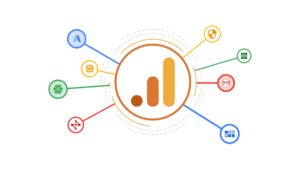Optimizing Website Performance with Google PageSpeed Insights Best Practices and Advanced Tips
Google PageSpeed
Elevate your website performance to new heights with Google PageSpeed Insights' best practices and expert tips - experience lightning-speed loading today!
Google PageSpeed Insights
is a tool that allows you to analyze the performance of your website and identify ways to improve its speed and user experience. Here are some best practices for using Google PageSpeed Insights:
Test both the mobile and desktop versions of your website
Make sure to test both versions of your website since they may have different performance issues.
Identify slow-loading resources
Look for resources such as images, scripts, and stylesheets that are taking a long time to load and find ways to optimize them.
Minimize HTTP requests
Every time a browser requests a resource, it takes time. Minimizing the number of requests can significantly improve page load time.
Use a Content Delivery Network (CDN)
A CDN can help to reduce the distance between the user and the server, which can lead to faster loading times.
Optimize images
Large, high-resolution images can slow down your website. Optimize images by compressing them and using the appropriate file format.
Enable compression
Use Gzip or similar technologies to compress text-based files such as HTML and CSS.
Minify your code
Minifying your code removes unnecessary spaces, comments, and line breaks to reduce the file size and improve load times.
Avoid blocking resources
Avoid using techniques that block resources from loading, such as using the "synchronous" keyword in JavaScript.
Use browser caching
Enabling browser caching can significantly reduce load times for repeat visitors.
By following these best practices
you can improve the performance of your website, provide a better user experience, and improve your website's search engine ranking. Keep in mind that while PageSpeed Insights is a good starting point, it's not the only metric to consider when measuring the performance of a website.
Monitor your website's performance regularly
Regularly checking your website's performance can help you identify and fix issues before they become a problem.
Prioritize issues
PageSpeed Insights will provide a list of issues that need to be fixed. Prioritize the issues that will have the biggest impact on your website's performance.
Use the "Speed" and "Usability" scores as a guide, but don't rely on them completely
The scores provided by PageSpeed Insights are a good indication of your website's performance, but they should not be the only metric you use.
Use browser developer tools
Browser developer tools such as the browser's built-in "Network" tab can provide more detailed information on how your website is performing.
Monitor the performance of your website on different devices and networks
different devices and networks may have different performance characteristics, so it's important to test your website's performance on a variety of devices and networks to ensure that it's performing well for all users.
Use the recommendations provided by PageSpeed Insights as a guide, but don't rely on them completely
Google PageSpeed Insights provides a list of recommendations for improving your website's performance. While these are generally good suggestions, it's important to understand that some recommendations may not be appropriate for your specific website or use case.
Use other tools
Google PageSpeed Insights is not the only tool available for measuring website performance. Other tools such as GTmetrix, WebPageTest, and Lighthouse can also provide valuable insights.
By following these best practices and tips
you can use Google PageSpeed Insights more effectively to identify and fix performance issues on your website, and provide a better user experience for your visitors.
Recommended Articles
Help Your Business Win!
Timely Service





